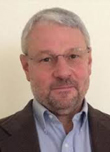New Initiative Seeks To Back Up ICH's Harmonization Mission
A conversation with Roger Nosal, NGT BioPharma Consultants

The International Society for Pharmaceutical Engineering (ISPE) wants to help clear away barriers that slow down innovation and, by extension, impede patient access to medicine.
A new initiative will focus on regulatory harmonization and, more specifically, the obstacles to introducing innovative technology for the “development, manufacture, lifecycle management, and distribution of pharmaceutical products.”
On April 23, ISPE revealed the outcome of its first work product — a survey report — of the new initiative, which it’s calling “Enabling Pharmaceutical Innovation: Delivering for Patients.” ISPE surveyed nearly 400 representatives from large and small pharma companies, contractors, and vendors to find out what’s slowing down pharmaceutical innovation and address it.
Respondents said the challenges during application reviews and a lack of globally harmonized regulations were among the leading concerns, the report says.
“Survey reports like this one, which provide statistically significant data points drawing from insights shared by hundreds of professionals, will enable us to advance efforts between the industry and regulators and ultimately help to shape the future of the pharmaceutical industry,” ISPE CEO Thomas Hartman said in a statement.
The pharmaceutical industry already has an organization charged with leading harmonization efforts, the International Council on Harmonisation, but for complex reasons we’ll get into here, dissonance still abounds.
We asked Roger Nosal, the new initiative’s chair and who works as head of global regulatory strategy and submissions at the NGT Biopharma consulting group, to help us understand more about what’s in the survey and what the initiative hopes to accomplish.
His answers have been edited slightly for clarity and style.
Just so we're all on the same page, what do we mean when we say, "innovative technology?"
NOSAL: Pharmaceutical innovation encompasses a variety of technological forms including, but not limited to, alternative product modalities like co-crystals or antibody-drug conjugates and bi-specifics, advanced, distributed, and-point-of-care manufacturing, and continuous manufacturing processes that include process analytical technology, multi-attribute monitoring, and adaptive controls and relatively simple improvements in manufacturing equipment, packaging configurations, and new analytical methods, e.g., for measuring microbial contamination.
More complex IT innovations such as the use of AI and ML are considered part of our remit.
The pharmaceutical industry not only relies but thrives on introducing therapeutic as well as technological innovation. In addition, innovations in pharmaceutical technology can, and should, include patient-centric improvements in product quality assurance, product use suitability, and convenience as well as increased patient access to medicines/treatments globally. Such innovations may include IT solutions, including use of AI.
For the purposes of the survey, most respondents interpreted innovative technology relatively narrowly as technology that improves manufacturing capabilities, productivity, and controls.
The initiative has an interesting name. What's the idea behind including "patients?"
NOSAL: The focus on patients is deliberate and important. This initiative aims to catalyze consistent and harmonized interpretation and implementation of ICH guidelines to improve global patient access to innovative medicines and technology.
“Enabling Pharmaceutical Innovation” comprises technical innovations in pharmaceutical manufacturing and analytical technology, the introduction of new medical modalities, modes of delivery and administration of medicines, and digital transformation (Pharma 4.0).
“Delivering for Patients” addresses improved assurance of product quality, supply consistency and reliability, improved product convenience and use, expedited patient access globally, and where applicable, improved productivity/reduced manufacturing costs. Seven pivotal objectives describe the scope of the initiative:
- Contemporize manufacturing technologies, i.e., advanced modeling and simulation digitalized technologies.
- Reinforce globally harmonized interpretation and implementation of ICH guidelines necessary to advance innovative technology and industry approaches such as Pharma 4.0, establishing criteria for a globally accepted drug product control strategy.
- Identify sources of regulatory challenges that are barriers or create limitations in applicability across multiple therapeutic modalities.
- Increase the level of clarity and consistency in harmonized approaches and identify and promote incentives for implementation of innovative technology.
- Leverage relevant regulatory harmonization initiatives and convergent regulatory approaches in progress regionally, accelerate adoption and implementation of ICH guidelines and other harmonization proposals, i.e., mutual recognition/reliance, ACCESS Work-sharing, WHO, etc.
- Identify incentives for regulatory authorities to collaborate.
- Assess learnings from the pandemic, where global regulatory and supply distribution experience can serve as a road map, i.e., mutual reliance, parallel development, regulator engagement.
The ICH's mission and the initiative's survey recommendations strongly resemble each other. How should we think about this as complementary to what ICH is already trying to do?
NOSAL: ISPE has been a strong advocate for ICH and recognizes the important contributions ICH has made to improving global regulatory harmonization. However, ICH relies on building consensus across several competing, sovereign, and statutory requirements among regional regulatory authorities and pharmaceutical industry business, productivity and economic interests.
While ICH guidelines have successfully advanced incrementally toward global regulatory harmonization, the extent of their adoption and implementation has been limited by consensus.
In addition, not all regulatory authorities are members of ICH. Those that are not have limited capacity to embrace harmonized regulatory approaches. Many of the objectives of this ISPE initiative exceed the remit of ICH, particularly those that propose collaborative alternatives, i.e., mutual reliance, expansion of work-sharing, etc.
Is this a critique of the ICH? Certainly, when the organization's own members produce unique versions of harmonized guidelines, it begs the question: Is that missing the point?
NOSAL: It is not a criticism. As an organization that relies entirely on consensus, ICH is focused on establishing alignment through specific scientifically justified guidelines that focus predominantly on what criteria can be harmonized and not on how harmonization should be implemented by sovereign regulatory authorities.
ICH is therefore limited, for example, in its capacity to reinforce collaborations among regulatory authorities and with industry in implementing harmonized approaches. In the instances where ICH members unilaterally produce their own versions of harmonized guidelines, it is generally a result of statutory obligations to which they are obliged to adhere and cannot readily change without legislative actions.
As mentioned in the answer to question 3, many of the objectives of this ISPE initiative exceed the remit of ICH, particularly those that propose collaborative alternatives, i.e., mutual reliance, expansion of work-sharing, etc.
The report mentions companies using the most conservative inventory control strategies when maybe they shouldn't have to. Can you talk more about a company's decision to pick the most rigorous rules so that all regulatory bodies will be appeased? It seems unnecessarily burdensome.
NOSAL: The industry is obligated to demonstrate compliance with all regulatory requirements for product applications approved and registered globally. Therefore, the most stringent requirements frequently drive the approach companies take to implement managing their respective inventories.
While many companies resort to managing their inventory to the most stringent expectations, some develop complex inventory systems that allow them to maintain compliance requirements that are different in multiple regions.
There are a multitude of examples of approved product applications with several different specification criteria that are managed through inventory distribution strategies to ensure appropriate compliance with individual regulatory authorities.
The survey reveals split paradigms for handling COVID-related medicines and conventional therapies, and it suggests that manufacturers want flexibility applied evenly. This raises a ton of questions, but chief among them might be related to resources. If innovations across the board received priority status or flexibility, wouldn't that strain agencies that already are resource-strapped?
NOSAL: Not necessarily. The response to the pandemic was reactive and the level of regulatory resources then was essentially the same as it is now. At the behest of their respective governments, regulatory authorities adapted to the urgency of the pandemic and collaborated with each other and with industry to obtain requisite supplies, medicines, and vaccines. It is instructive to acknowledge that while the response to the pandemic offered an opportunity to consider alternative approaches to improve engagement and alignment among regulatory authorities, the regulatory requirements for demonstrating product quality were not compromised.
Those alternative approaches simply and directly reinforced the need for collaboration and mutual reliance among regulatory authorities. As a result, a measure of risk-based flexibility to prioritize and expedite regulatory approvals and distribution of vaccines and medicines was realized.
We do not believe that the concomitant increase in resource commitments during the pandemic should be extrapolated to accommodate the prioritization of innovative technology. Rather, we believe that the survey results suggest there is an opportunity to actually reduce the resource capacity burdens with respect to innovation and innovative technologies by increasing the level of collaboration, engagement, and mutual reliance among regulatory authorities similar to what occurred during the pandemic.
A big theme we see in the report and survey involves a lack of understanding (awareness of the U.S. Emerging Technology Team and EU Quality Innovation Group, for example). How much regulatory divergence could we clean up with better communication, marketing, and knowledge sharing?
NOSAL: Survey results indicate that companies that engaged with the Emerging Technology Team (ETT) and Quality Innovation Group (QIG) were significantly more successful at advancing their respective innovations than companies that did not. By almost all accounts, the ETT and CBER Advanced Technology Team (CATT) have been instrumental in providing guidance that has enabled development and approval of innovative technologies not only in the U.S. but, by extension, inadvertently influencing other regulatory authorities as well.
While the QIG is still relatively nascent, anecdotal reports suggest it has enabled innovation to advance in a similar manner. We agree that increased communication, marketing, and knowledge sharing would improve the engagement of the ETT/CATT and QIG. However, we do not necessarily believe that improving awareness by itself will reduce global regulatory divergence.
While the benefits of engaging the ETT/CATT and QIG are positive indications of incremental progress in improving global regulatory convergence, many regulatory authorities continue to enforce sovereign statutory requirements, even for innovative technologies that continue to foster global regulatory divergence.
About The Expert:
 Roger Nosal is an independent consultant and also serves as head of regulatory strategy for NGT BioPharma Consultants, a consortium of experts devoted to development of pharmaceutical products. Prior to his current roles he was vice president and head of global chemistry, manufacturing, and controls at Pfizer, where he was accountable for the development and implementation of global regulatory CMC strategies and applications for all small and large molecule innovative products and medical devices.
Roger Nosal is an independent consultant and also serves as head of regulatory strategy for NGT BioPharma Consultants, a consortium of experts devoted to development of pharmaceutical products. Prior to his current roles he was vice president and head of global chemistry, manufacturing, and controls at Pfizer, where he was accountable for the development and implementation of global regulatory CMC strategies and applications for all small and large molecule innovative products and medical devices.
